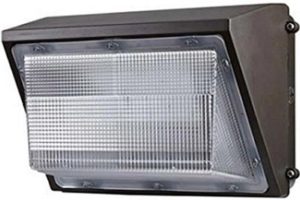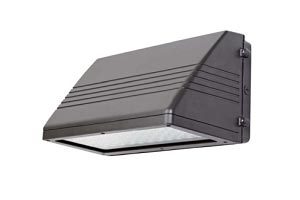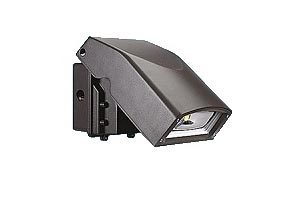Our area lighting fixtures are IP65 rated for outdoor use. LED area lighting fixtures are ideal for outdoor applications such as parking areas, building perimeters, loading areas, driveways, sign and building flood lighting. These LED industrial area lighting fixtures are wet location listed. This specific line of LED industrial lighting fixtures are constructed of a die-cast aluminum housing with impact resistant, UV stabilized polycarbonate linear prismatic lens. LED area lighting virtually eliminates ongoing maintenance required with metal halide (MH) and high pressure sodium (HPS) light sources.
In the past, lighting of outdoor areas including streets, roadways, parking lots, and pedestrian areas was dominated by metal halide (MH) and high pressure sodium (HPS) sources. Recent advances in LED technology have resulted in a new option for outdoor area lighting, with several advantages over MH and HPS sources. Well-designed industrial LED outdoor lighting fixtures provide the required surface illuminance using far less energy and with improved uniformity, compared to HID sources. LED lighting fixtures also have significantly longer life, 50,000 hours or more, compared to 15,000 to 35,000 hours, and provide better lumen maintenance. Other LED advantages include: they contain no mercury, lead, or other known disposal hazards; and they come on instantly without restrike delay. Further, while MH and HPS technologies continue to improve incrementally, LED technology is improving very rapidly in terms of luminous efficacy, color quality, optical design, thermal management, and cost.
Energy effectiveness includes luminous efficacy of the light source and appropriate power supply in lumens per watt (lm/W), optical efficiency of the fixture, and how well the fixture delivers light to the target area without casting light in unintended directions. The goal is to provide the necessary illuminance in the target area, with appropriate lighting quality, for the lowest power density.
Many issues enter into decisions for LED industrial area lighting. Energy efficiency is a priority in this type of application due to the long running hours and relatively high wattages typically involved. Several areas are relevant including energy efficiency factors, as well as issues related to durability, color quality, life and lumen maintenance, light distribution, glare, and cost. Metal Halide lamps are high-intensity near point sources. The optical design for these fixtures causes the area directly below the fixture to have a much higher illuminance than areas farther away from the light source. This over lighting represents wasted energy, and may decrease visibility since it forces adaptation of the eye when looking from brighter to darker areas. In contrast, the smaller, multiple point-source and directional characteristics of LEDs can allow better control of the distribution, with a resulting visible improvement in light uniformity.
The most efficient white LEDs at this time emit light of 4500K to 6500K color temperature (CCT). This makes the light color white to bluish-white in appearance. Light color rendering varies according to the CCT of the LEDs, but is much better than HPS and standard MH.
LED lighting fixtures use different optics than MH or HPS lamps because each LED is, in effect, an individual point source. Effective lighting fixture design exploiting the directional nature of LED light emission can translate to lower optical losses, higher efficiency, more precise cutoff of backlight and uplight, and more uniform distribution of light across the target area. Better surface illuminance uniformity and higher levels of vertical illuminance are possible with LED lighting fixtures as compared to HID light sources.






